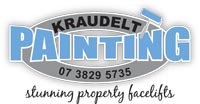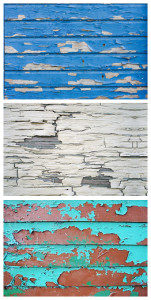Gold Coast Paint Problem Solutions
 Does your Gold Coast home resemble the one on the left – neglected, peeling, and in desperate need of a makeover? You're not alone. From rundown fixer-uppers to once-loved houses needing TLC, exterior paint problems are a common sight. But peeling paint is just the tip of the iceberg. Expert Paint Problem Solutions for Gold Coast Homes are available through Kraudelt Painting, tackling a wide range of issues including grime buildup, blistering paint, and even dampness.
Does your Gold Coast home resemble the one on the left – neglected, peeling, and in desperate need of a makeover? You're not alone. From rundown fixer-uppers to once-loved houses needing TLC, exterior paint problems are a common sight. But peeling paint is just the tip of the iceberg. Expert Paint Problem Solutions for Gold Coast Homes are available through Kraudelt Painting, tackling a wide range of issues including grime buildup, blistering paint, and even dampness.
There are two basic things to consider: the first is identifying the cause of the problem you are faced with, and the second is how to deal with it, both to get rid of the case, and to prepare the surface for repainting. If you live in the Brisbane area, you can contact Kraudelt Painting for an assessment, advice and a quotation to repaint. If you don't, we'd still like to help you, so here's our troubleshooting list of some of the most common problems:
Scrub Good Old Dirt in the Form of Grease and Grime
It is amazing how quickly grease and grime build up on every possible surface of the house. It's especially bad in kitchens and on wall surfaces where there is a lot of "traffic". It can also be bad on the outside if the house is in a badly polluted area, for example near to factories or even close to a city centre, depending of course where in the world you live.
While dust can be quickly brushed from just about any surface, grease and grime needs to be scrubbed clean. Usually a good going over using sugar soap and warm water will do the trick, but if it is really bad you might need to use a proprietary degreasing agent.
Strip, Scrape and Sand Blistering Paint
This shouldn't be a secret, but people who don't know about domestic painting processes often don't realize that paint blisters are inevitable if the surface to be painted was not properly cleaned before it was painted. Another reason for blistering paint is that moisture builds up under the paint surface.
Timber is the most common surface to be affected by blisters, particularly if it isn't well matured wood, isn't completely dry, has had prolonged contact with water and has become swollen, or if it was previously coated with something that has a bad reaction to the new paint coating. Another problem could be the use of a knotting compound on parts of timber where there aren't any knots. Knotting compound is made to help seal knots in wood like pine, and should not be used on surfaces where there aren't any knots. If the whole timber surface is coated with a knotting compound, it will blister.
If the paint has blistered badly it will need to be stripped, scraped and sanded and possibly scrubbed before being allowed to dry out completely so it can be primed and painted.
Scrape Peeling and Flaking Paint
It isn't only bad maintenance that leads to peeling and flaky paint; surfaces that weren't properly prepared before they were painted will also peel and flake. What we tell our clients is that every surface is special and so every surface has to be treated in the correct way. And it isn't enough to simply use the right base coat. For instance, on some surfaces a primer or a bonding liquid that is left to dry for too long before overcoating will also result in eventual peeling or flaking. This means you need to choose the right product and use it correctly.
Enamel paint can be a big problem if the surface wasn't correctly primed or painted with a suitable undercoat. Exterior walls painted with an acrylic paint or PVA are also likely to peel if they become damp or if the render is loose. Sometimes painters take a shortcut and use water-based acrylic or emulsion paints right over enamels, inviting disaster. Another reason for peeling paint is that it was applied either during very hot weather or when it was raining (even just drizzling) - which is yet another indication of bad workmanship.
If paint is peeling or flaking it will need to be scraped and possibly totally stripped. The bare surface will then need to be correctly prepared (depending what the surface is), before it is repainted.
Loose Render
We mentioned above that paint will tend to peel and flake if the render is loose. This is the result of bad workmanship, often because the incorrect mortar mix (cement, sand, lime and water) was used. Ratios aren't critical, but they are very important. The application of render is also incredibly important. It should bot be thicker than 15 mm and should be as uniform as possible. If thicker render is required a second layer can be applied once the first layer has set. It is not necessary to let it cure for 28 days. However, it is essential to allow render to cure fully prior to painting it or you are likely to get efflorescence (the soluble salts that seep out of the render) that will inevitably cause blistering or flaking of the paint coating.
If the render is loose it will have to be removed and redone before the walls can be painted. Kraudelt Painting does not offer a rendering service, but we can offer advice.
Prevent Patchy Paint
Painting on porous surfaces can cause a patchy appearance. It also happens if highly absorbent fillers used to plug holes and cracks are not sealed with an undercoat prior to painting. Both ceilings and plasterboard walls will look patchy if the paintwork is not done correctly, because the board that is normally used is porous. Common causes are that the paint was not stirred adequately or the painter did not maintain a wet edge. He or she may also have overlapped. If the finish is patchy but sound a second coat correctly applied should be adequate.
Prevent Damp Problems
Damp can be a major issue both inside and outside the house, and it must be addressed. It is vital never to paint over areas affected by dampness until the problem has been eliminated. For this reason, we have addressed damp problems in a separate post.
Of course, whether it's damp or some other problem, by coming to terms with the possible things that can go wrong, you can also prevent major problems from happening in the first place. In addition, always be sure to hire a reputable paint contractor with a proven track record.
Get in touch with local painters in the Brisbane and Gold Coast areas
Kraudelt Painting has been restoring Brisbane and Gold Coast homes to their full glory for many years now. We are your local experts when it comes to painting home interiors. Contact us today for further information, or to arrange an inspection of your home and offer a quote.
Our service areas includes Brisbane, Ipswich, Logan, Moreton Bay and Redlands.

